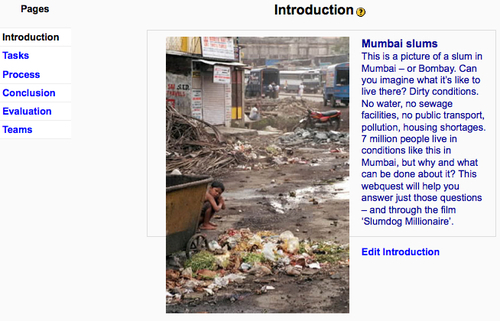Aim: Help students read and evaluate issues using web materials
Moodle modules: None
Extra programs: Add-on Webquest
Ease of setup: ***
In this webquest students will write a critical evaluation. We'll need to choose the subject and questions carefully, according to the age and interests of the students and their level of language. Our example is a webquest for teenagers to investigate the film "Slumdog Millionaire" and the situation it describes. They'll need a general introduction which sensitizes them to the film and then some guiding questions. Finally, they'll need some resources which help them evaluate the slum situation in India. This is what the first page of the webquest will look like when it's finished:




